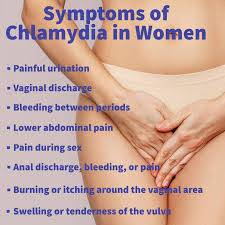Chlamydia
Chlamydia is a common sexually transmitted infection (STI) caused by the bacterium Chlamydia trachomatis. It affects both men and women, primarily targeting the genital tract but can also infect the rectum, throat, and eyes. It often presents with mild or no symptoms, making it easy to overlook and spread.
---
Causes
1. Sexual Transmission:
Unprotected vaginal, anal, or oral sex with an infected partner.
2. Vertical Transmission:
From an infected mother to her baby during childbirth.
Risk factors include:
Multiple sexual partners.
Not using condoms or other protective methods.
Previous or concurrent STIs.
Age (common in individuals under 25 years).
---
Signs and Symptoms
In Women:
Abnormal vaginal discharge (yellow or cloudy).
Pain during urination.
Painful sexual intercourse.
Lower abdominal or pelvic pain.
Intermenstrual bleeding or post-coital bleeding.
In Men:
Clear or cloudy discharge from the penis.
Burning sensation during urination.
Pain or swelling in one or both testicles (less common).
In Both Genders:
Rectal Infection: Discharge, rectal pain, or bleeding.
Throat Infection: Sore throat (rare and typically asymptomatic).
Eye Infection: Conjunctivitis (redness, swelling, discharge).
---
Effects
1. Untreated Chlamydia:
In Women: Pelvic inflammatory disease (PID), which can lead to infertility, chronic pelvic pain, and ectopic pregnancy.
In Men: Epididymitis, causing testicular pain and infertility.
2. Neonatal Complications:
Babies born to infected mothers can develop pneumonia or eye infections (conjunctivitis).
3. Reactive Arthritis:
A rare complication involving joint inflammation, eye issues, and urethritis.
4. Increased Risk of HIV:
Chlamydia increases susceptibility to HIV infection if exposed.
---
Solutions
1. Diagnosis:
Laboratory Tests:
Nucleic acid amplification tests (NAATs) on urine or swab samples from the cervix, urethra, rectum, or throat.
Screening:
Recommended for sexually active individuals, especially women under 25 and high-risk groups.
2. Treatment:
Antibiotics:
A single dose of azithromycin or a 7-day course of doxycycline is the first-line treatment.
Alternative antibiotics like erythromycin or levofloxacin may be used if needed.
Partner Notification and Treatment:
All recent sexual partners must be informed, tested, and treated to prevent reinfection.
3. Supportive Care:
Abstain from sexual activity until treatment is complete (7 days after starting antibiotics).
4. Prevention:
Use Condoms: Correct and consistent use during sexual activity.
Regular STI Testing: Especially for sexually active individuals with multiple partners.
Limit Sexual Partners: Reducing the number of partners lowers the risk.
Education and Awareness: Understand STI transmission and symptoms.
Avoid Sharing Sex Toys: If sharing, use condoms on toys and clean them properly.
5. Pregnancy Management:
Pregnant women should be screened and treated to prevent neonatal complications.
---
Prognosis
Chlamydia is curable with prompt antibiotic treatment. However, untreated infections can lead to long-term health issues, including infertility. Regular screenings, safe sexual practices, and early treatment are essential for managing and preventing the spread of chlamydia.


